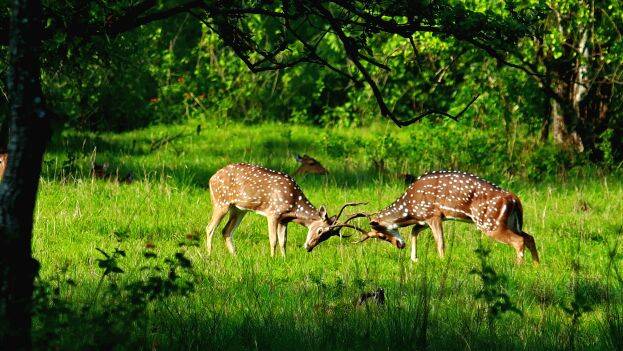

The human-wildlife conflict was never this grave in Kerala. As of now, every day passes with some news or other that briefly mentions cases of wild animal intrusion in human habitats. And now, this has transpired into the news of human deaths daily.
Wild bison, elephants and even deadly tigers are prowling on streets in Kerala, instilling nightmare for people mostly in rural areas. Given the recent tragic deaths in wildlife attacks and considering the intensifying public protest, the cabinet meeting held on Thursday decided to declare the human-wildlife conflict a state disaster.
There is an array of reasons for the current intrusion of wild animals into human habitats. Uncontrolled encroachment of forest land and climate change occupy prime spots in the list. But it is not an ideal time to forage for reasons but solutions are the need of the hour.
A high-level meeting and a cabinet meeting to discuss preventive measures in the event of frequent human-wildlife conflict have now issued some directives. A part of the decisions is the formation of several committees including international and national expert committees, state-level committees, control committees, and district and regional committees. But who will enlighten these elite politicians that the wild animals care less for these committees?
Committees are just a face-saving act and they offer little hope in curbing down the wild animal attacks. At the same time, declaring human-wildlife conflict as a state disaster has several advantages, as the financial assistance to victims will happen without any delay. In case of disasters, the disaster management authority will be responsible for coordination in that area.
The authority can use a fixed percentage of the funds provided by the centre including compensation. Money from the State Disaster Response Fund can also be used. It will also help ease the bank loan liability of victims of wildlife attacks.
At the same time, local bodies can do many things with the help of the public, including installing electric fences along forest boundaries to prevent wildlife from entering the city premises.
A good example of this is the popular fencing project successfully implemented by Vythiri Panchayat in Wayanad district a year ago. The Panchayat has established a seven-km-long electric fence with financial assistance from households, resorts and the public, and is also maintaining it with the help of the public. Since the installation of the fences in the area, no wild animals have entered the premises. Vythiri panchayat is now preparing to erect another fence for another eight kilometres.
This scheme, which was implemented without government assistance, may face difficulty when tried to emulate in other places, due to the underlying geographical challenges.
The successful implementation of the Vythiri project offers a valuable message that there are projects that can be done at will, rather than brooding time in hopes of government assistance.